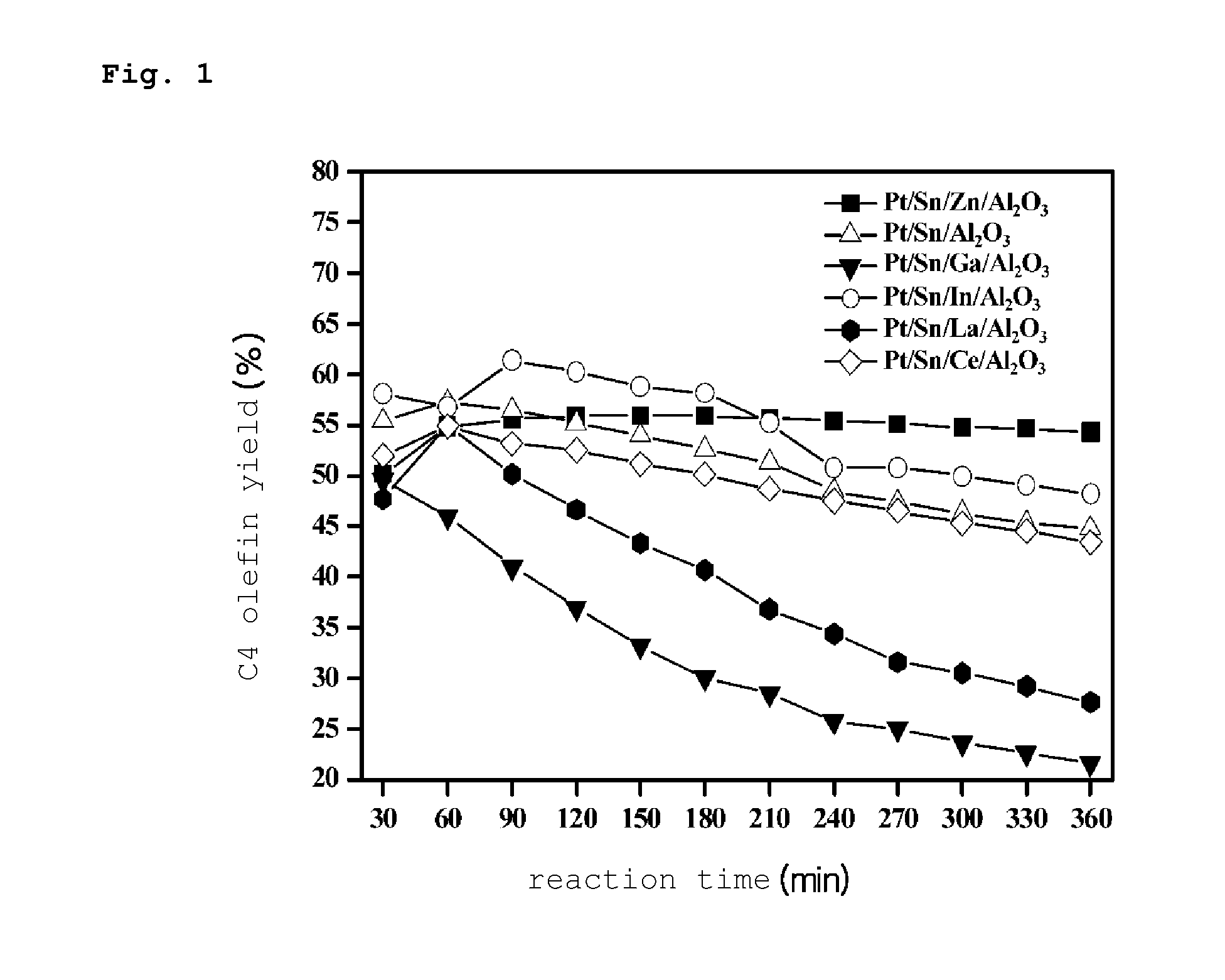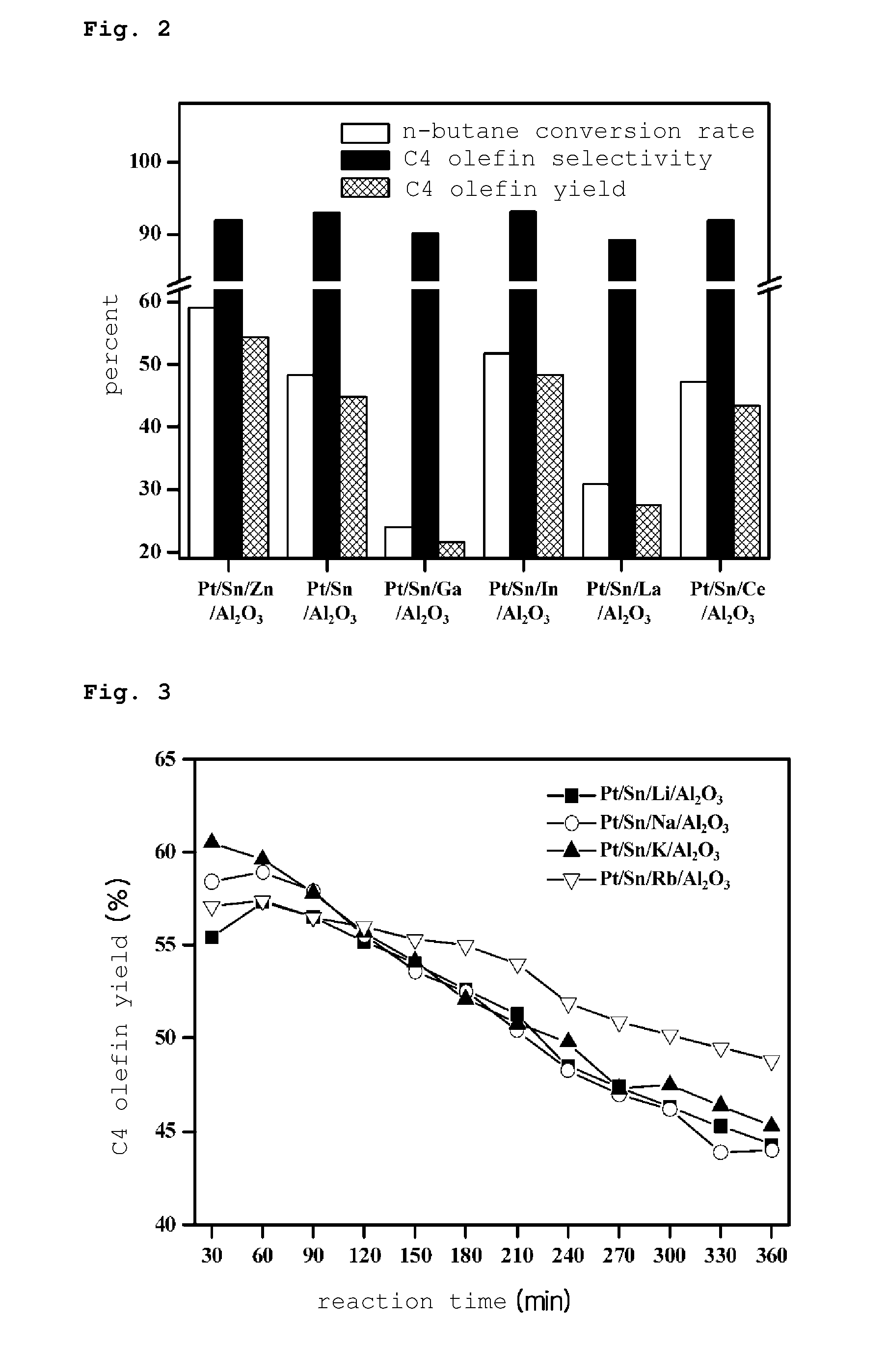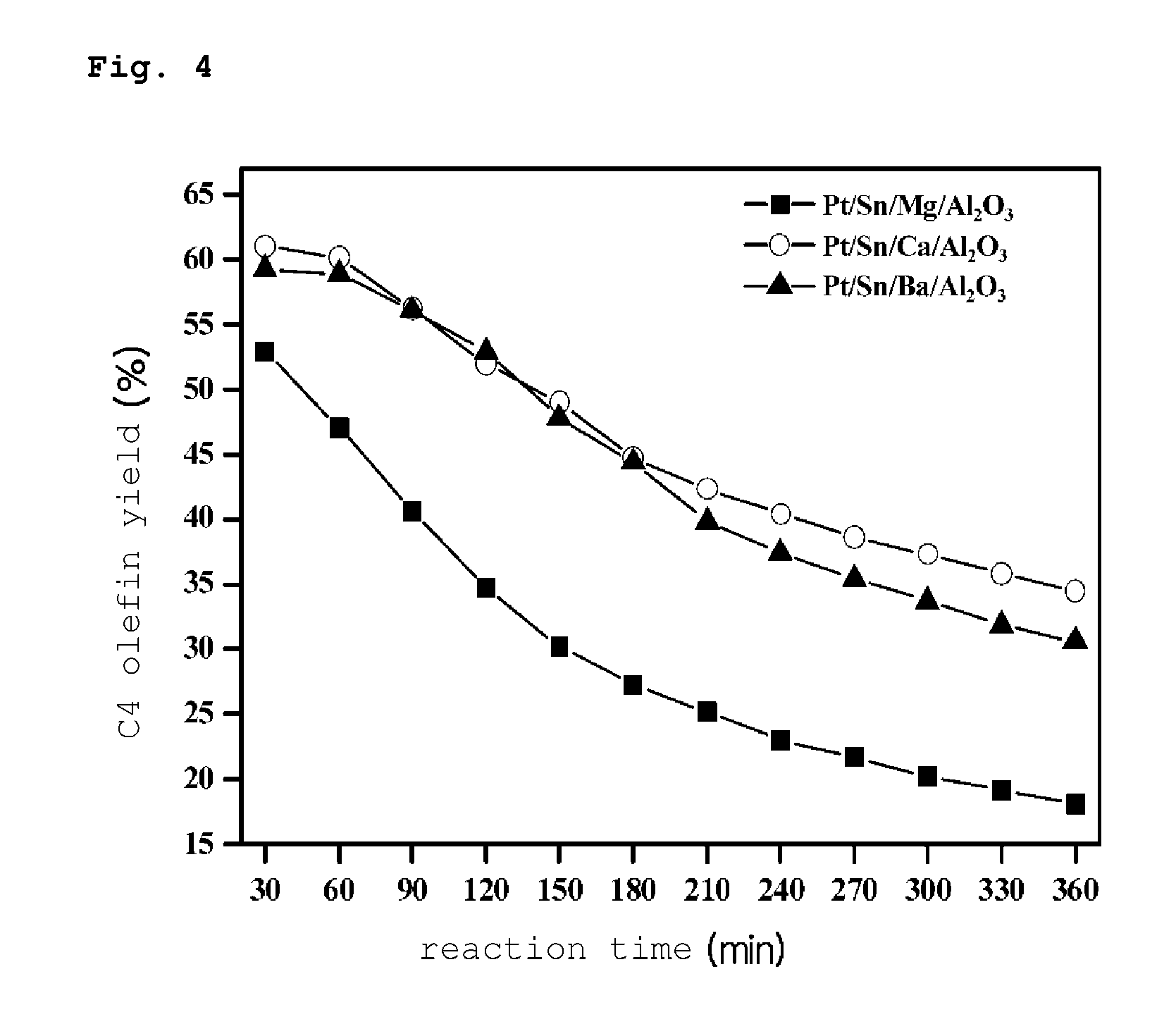PREPARATION METHOD OF PLATINUM/TIN/METAL/ALUMINA CATALYST FOR DIRECT DEHYDROGENATION OF n-BUTANE AND METHOD FOR PRODUCING C4 OLEFINS USING SAID CATALYST
a technology of n-butane and platinum, which is applied in the direction of hydrocarbon preparation catalysts, metal/metal-oxide/metal-hydroxide catalysts, physical/chemical process catalysts, etc., can solve the problem of long-term imbalance between supply and demand of c4 olefins, methods become uneconomical, and cannot cope with the rapid increase in demand for n-butene and 1,3-butadiene, etc. problem, to achiev
- Summary
- Abstract
- Description
- Claims
- Application Information
AI Technical Summary
Benefits of technology
Problems solved by technology
Method used
Image
Examples
preparation example 1
Preparation of Zinc-Alumina (Zn—Al2O3) Through an Impregnation of Zinc by Using a Conventional Alumina Carrier
[0074]For preparing Zn—Al2O3 in which zinc was supported to the content of 0.5 wt % on a conventional alumina carrier (γ-Alumina, surface area=180 m2 / g), 0.046 g of zinc nitrate hexahydrate was placed in a beaker and dissolved in distilled water therein. To thus prepared solution, when the precursor was completely dissolved, 2.0 g of conventional alumina was placed thereto, and the resulted mixture was heated at 70° C. with stirring until distilled water was completely evaporated, resulting in a solid product. After that, the solid product was additionally dried in an oven at a temperature of 80° C. for about 12 hours, and thus obtained sample was heat-treated in an electric furnace maintained at a temperature of 600° C. in an air atmosphere for 4 hours so as to form a zinc-alumina product, wherein 0.5% of zinc was supported to alumina. The resulted product was referred as Z...
preparation example 2
Preparation of Transition Metal-Alumina (M—Al2O3) Through an Impregnation of Various Transition Metal (Ga, In, La, Ce) by Using a Conventional Alumina Carrier
[0075]According to the above method described in the preparation example 1, various transition metals were used to prepare 4 species of transition metal-alumina. Specifically, as for the various transition metal, gallium, indium, lanthanum, cerium were used, and as for the precursors, gallium(III) nitrate hydrate, indium(III) nitrate hydrate, lanthanum (III) nitrate hexahydrate and cerium(III) nitrate hexahydrate were used, respectively.
[0076]After adjusting the metal content to become 0.5 wt %, it was impregnated so as to form a solid material, which was dried at 80° C. for about 12 hours, and heat-treated in an electric furnace maintained at a temperature of 600° C. in an air atmosphere for 4 hours, thereby preparing 4 species of transition metal-alumina catalysts in which each transition metal was supported to the amount of ...
preparation example 3
Preparation of a Platinum-Tin-Alumina (Pt—Sn—Al2O3) Catalyst and a Platinum-Tin-Metal-Alumina (Pt—Sn-M-Al2O3) Catalyst Through a Sequential Impregnation of Various Metals, and Tin and Platinum by Using a Conventional Alumina Carrier
[0077]A platinum-tin-metal-alumina (Pt—Sn-M-Al2O3) catalyst was prepared by the sequential impregnation of tin and platinum to the metal-alumina prepared by the above preparation examples 1 and 2. For comparison, a platinum-tin-alumina catalyst was prepared by sequential impregnation of tin and platinum to alumina.
[0078]The preparation of the platinum-tin-metal-alumina catalyst and the platinum-tin-alumina catalyst through impregnation of each tin and platinum to metal-alumina and alumina, respectively were as follows.
[0079]For preparing each of a tin-metal-alumina catalyst and a tin-alumina catalyst, in which tin is supported to the content of 1 wt %, by using a metal-alumina and alumina, tin (II) chloride dihydrate 0.038 g was placed in a beaker and dis...
PUM
| Property | Measurement | Unit |
|---|---|---|
| Temperature | aaaaa | aaaaa |
| Temperature | aaaaa | aaaaa |
| Temperature | aaaaa | aaaaa |
Abstract
Description
Claims
Application Information
 Login to View More
Login to View More - R&D
- Intellectual Property
- Life Sciences
- Materials
- Tech Scout
- Unparalleled Data Quality
- Higher Quality Content
- 60% Fewer Hallucinations
Browse by: Latest US Patents, China's latest patents, Technical Efficacy Thesaurus, Application Domain, Technology Topic, Popular Technical Reports.
© 2025 PatSnap. All rights reserved.Legal|Privacy policy|Modern Slavery Act Transparency Statement|Sitemap|About US| Contact US: help@patsnap.com



